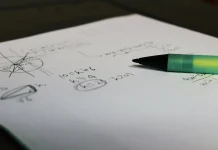Dr. Toni Shub is the CEO of QoreInsights. She is leading the innovation and development of the Classroom Education Plan, a K-5 practice-embedded personalized professional development program with a decision intelligence platform for needs analysis and research-informed strategies. Toni earned her EdD in Leadership and Learning in Organizations from Vanderbilt University, and holds an MS in Occupational Therapy and a BA in Child Development: Child Mental Health. She has six patents and two peer-reviewed publications. As an Early Learning Consultant, she developed the Mead® Writing Fundamentals line. Toni owned/operated a pediatric occupational therapy clinic for 20 years and is an international speaker focusing on high-impact factors and strategies for teaching and learning, and mitigating bias in AI-powered EdTech.
I always enjoy hearing about how people got to where they are. What has your career trajectory looked like and how has it formed your philosophy on education?
Thank you for asking. My career is summed up by two Ralph Waldo Emerson quotes. I started my career with this quote on the wall: “…To know even one life has breathed easier because you have lived that is to have succeeded.” Over time, I really felt a calling to make even a greater impact, which led me to adding the quote: “do not go where the path may lead, go instead where there is no path and leave a trail.”
I have been pretty lucky and have had a fun and rewarding career with a lot of variety. I started out as an occupational therapist and ended up owning and running my own pediatric clinic, Pathways for Learning, in Charlotte, NC for 20 years. I loved working with kids and families and training therapists. As I developed expertise and saw what was working, I started speaking around the country and loved spreading the knowledge I had gained. In 2004, I started running into problems without apparent solutions and decided to try to tackle them. I started with developing a pencil grip, Grotto Grip, which I patented, successfully launched and still sell today. In 2005, I developed RediSpace to help students learn spacing between letters and number alignment when writing. Being at the right place at the right time led me to license RediSpace to MeadWestvaco, now Acco, which helped me move my products into mass market. The next few years were incredibly fun, developing Mead Writing Fundamentals line for Target, Wal-Mart, Staples, etc.
At this point, I was going to tradeshows with my products, running my clinic, and momming to 6 kids. I loved the variety and the impact. I got good at finding the “why” of the kids who came to me for help and figuring out how to target those issues. In this role, I often heard, “Wow, my student’s [reading, writing, or math] have really improved,” but I rarely worked on those skills directly. What I did was address the underlying factors. Often, that included understanding what was happening from the child’s perspective. For example, when a 2nd grader was in trouble with his teacher for not listening when told to color a picture of a house he drew, he was described as stubborn and defiant. I said to the student, “Tell me about what happened.” He said, “I didn’t color it because it is a picture of the WHITE HOUSE.”
A few years later when getting my doctorate in education, I decided to research ALL the academic and non-academic factors that significantly affect student achievement and engagement. I thought, what if every teacher could understand all these factors for every child in their classroom and then have at their fingertips the very best instructional method that would address the most pressing needs in the class. I realized the only way to bridge the gap between classroom needs (student and teacher needs, academic performance, and classroom behavior) and the best evidence-based methods is to use technology. Technology also allows for scaling of the solution so every teacher gets what they need, when they need it; and, every student has a teacher who has considered whole-child needs, heard his/her voice, and has access to the most up-to-date, relevant, classroom-ready strategies. My experiences, research, and realizations culminated in my latest edtech product, the Classroom Education Plan.
You have had a lot of success as an entrepreneur! Can you talk about the Classroom Education Plan?
Sure, the Classroom Education Plan (CEP) is the culmination of our work and is reimagining how to improve teaching and learning. CEP is an AI-powered professional learning system for elementary educators. It uses real-time teacher and student input and data to match teachers to evidence-based instructional strategies to meet the most pressing needs in each classroom, and then tracks impact on student growth. It evolves throughout the school year so teachers, coaches, and administrators can adapt to changing needs. The CEP uniquely:
uses decision support technology to leverage learning sciences and real-time classroom needs to guide teachers to the best-fit evidence-based instructional strategy at scale. (This technology has been proven in medicine to accurately identify conditions and guide recommendations, and has saved countless lives.)
guides district and school improvement planning with real-time, whole-child data and a clear understanding of what is working or not working for whom, when, and where.









